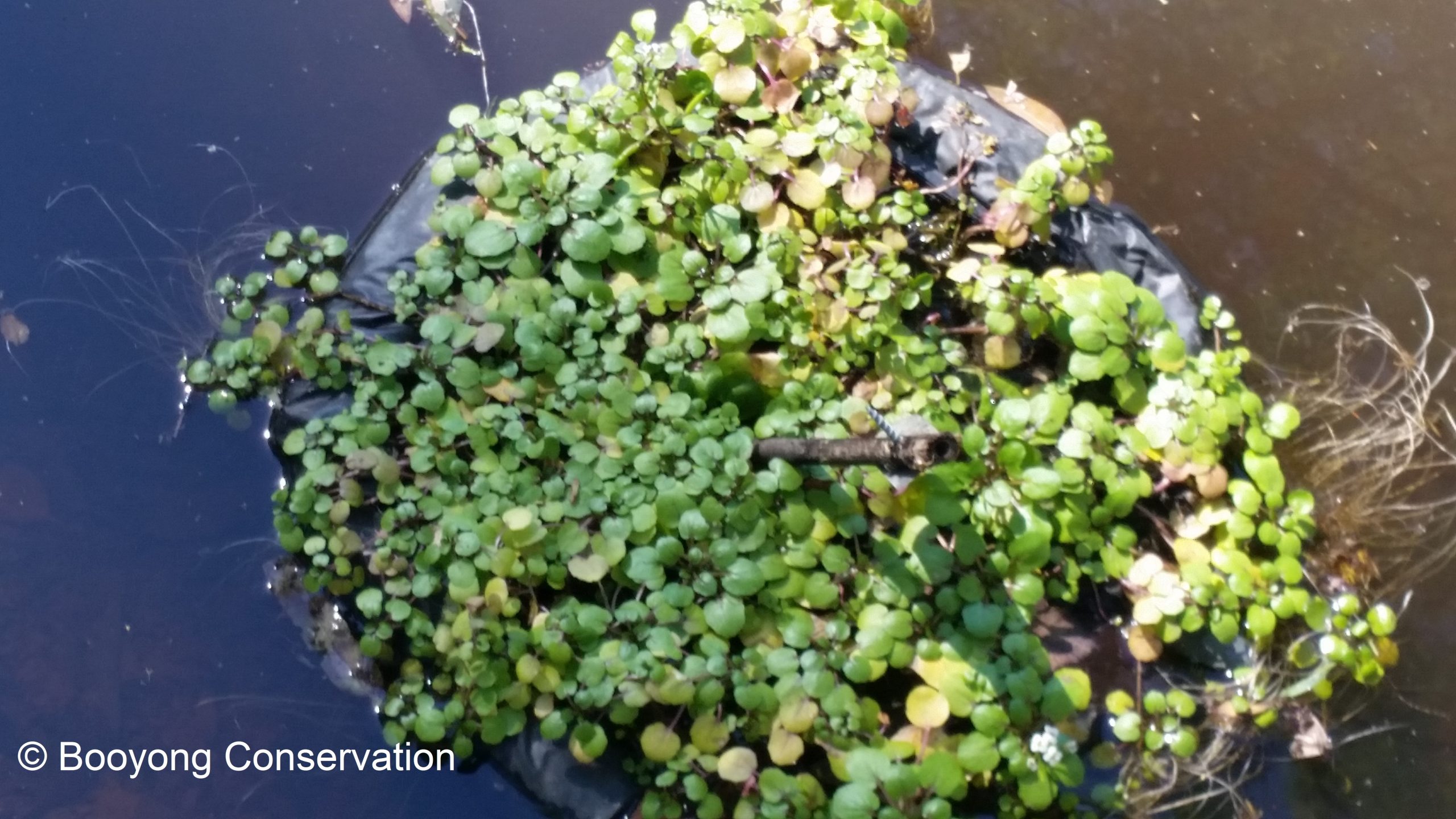I have to say making these floating pots and exploring aquatic edibles has been so much fun. Unfortunately, I have been unable to locate the original you tube video that inspired me but if I come across it again, I will upload it for you.
Historically, watercress was a staple in most gardens during the depression era, from here it made its way into morning and afternoon tea sandwiches. It is a nutrient rich perennial plant that is a lovely addition to a water garden. Watercress has tiny round, scalloped leaves with pretty white flowers in Summer.
Growing – Watercress grows well in full sun to semi shade and at minimum likes at least six hours of sun each day. Watercress grows well in slow moving water.
Care –We do not apply fertiliser to our plants as they are growing in the dam and we don’t want to contaminate the water or encourage algae to grow. However, if yours plant is growing in a pot and the leaves turn yellow (nutrient deficiency) you can provide a liquid feed.
Pruning – The roots float in the water and we give our pots a constant prune and divide into plants to share with friends and family every six months or so. They bounce back beautifully.
Pests and Diseases – Watercress if a preferred food for snails. We haven’t had this issue in the floating pots but if your plant is in a pot it may be susceptible. You can either remove them or use a shallow dish of beer to attract them (they fall in and drown).
Harvest – Watercress can be harvested three weeks after planting and is best eaten in Autumn prior to flowers appearing. Once the plant flowers, the leaves become quite bitter to taste.
Use a pair of scissors and snip leaves from the plant, rinse well and store submerged in water in an airtight container in the fridge for two to three days.
As it grows in water, ensure to wash it thoroughly to remove any impurities both before and after placing in the fridge.
Do not harvest wild watercress from unknown sources as there may be contaminants in the water and the plant absorbs pollutants from the water that may cause harm. 
Propagation – We grew our water cress from seed (late Summer) and ensured the seedlings remained moist and did not dry out.
If you are growing from separating an existing plant, ensure the roots of the plants do not get dry. We kept our plants in a tray of water until they were planted in the dam.
Health Benefits – Watercress is packed with dietary fibre and Vitamins A, C, and K, iron, calcium, potassium, and magnesium.
Eating – Watercress has a tangy peppery flavour and can be eaten raw or cooked. It is making a bit of a comeback in the kitchen and the foliage can be used in salads, soups, sauces. It is especially popular served on cucumber sandwiches as a high tea.

You must be logged in to post a comment.